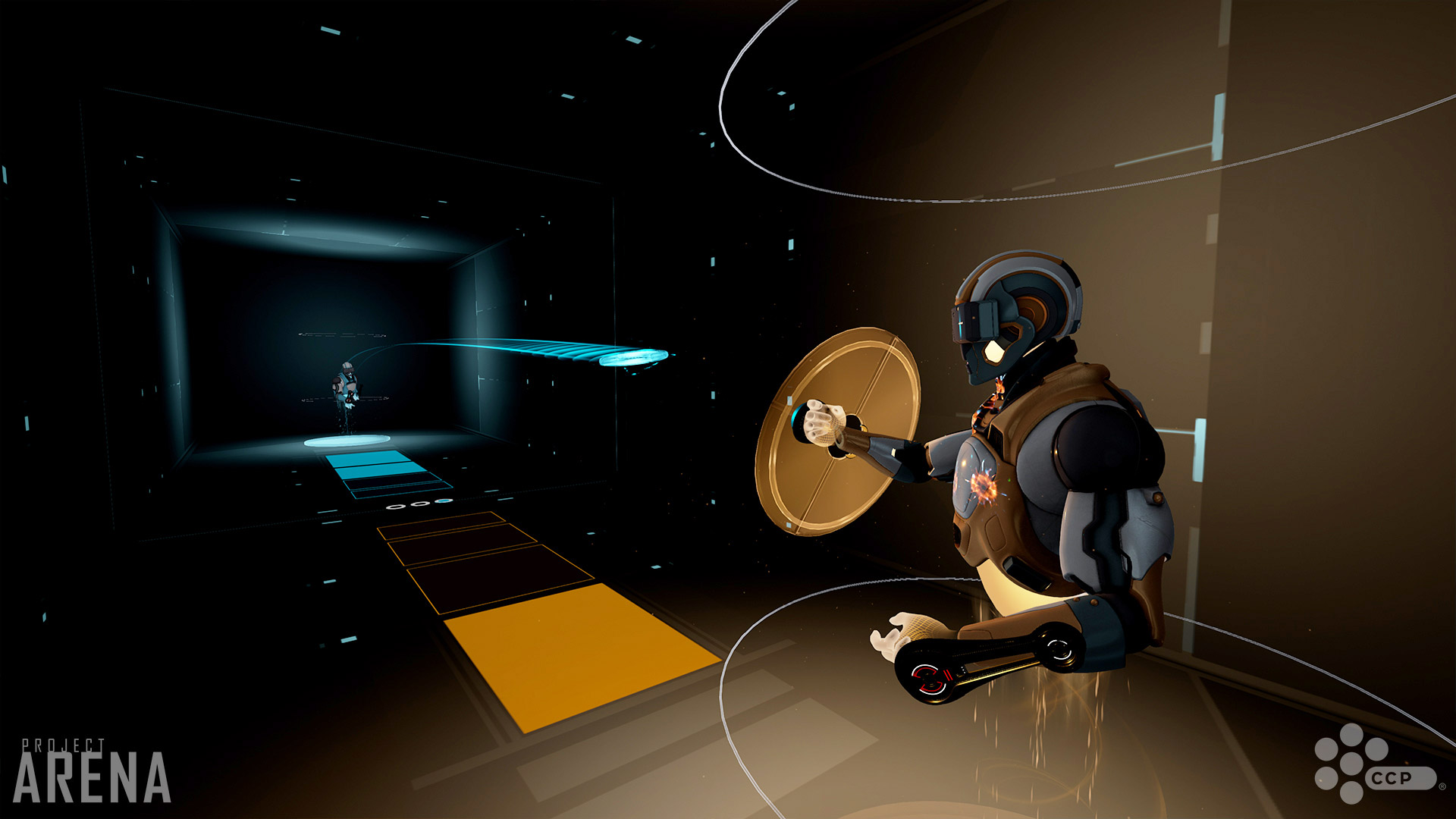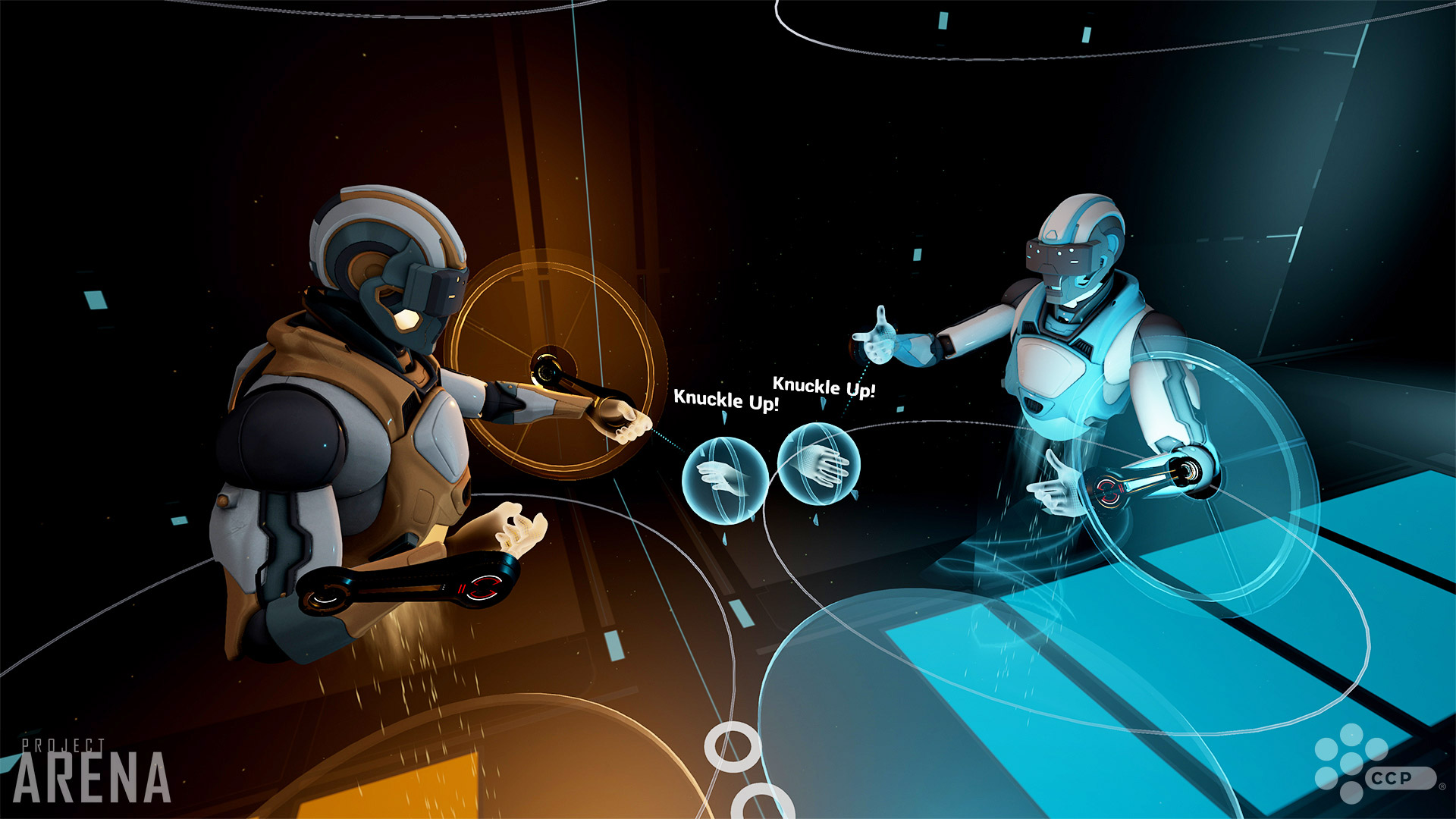I didn’t know him. I didn’t care to know him. I was about to take him down. The countdown ended, and with my other hand I threw my attack disk so it deflected off the wall to confuse him. This was it. My dream come true.
It felt aggressive without being violent, skilled without being impossible.
In the 80s, I would have done anything to be transported into the world of Tron, a neon-drenched techno world where I could battle it out against other ‘programs’ in a cyber sports arena, and perhaps rub shoulders with the titular hero. Fast forward more than 30 years, and in a London hotel, I fulfilled that dream playing CCP’s Project Arena on the HTC Vive virtual reality headset.
If you haven’t heard of Project Arena, it’s the work of games studio CCP, best known for Eve Online, and on the surface it’s a love letter to sci-fi fans like me. However, dig a little deeper and it’s an ambitious, exploratory step into the world of eSports that will appeal not just to rabid, hardcore players like those competing in League of Legends tournaments now, but to normal people.
Battle royale
The rules are simple and the gameplay is wonderfully accessible. On each wrist I had a glowing shield to deflect incoming attacks. They can withstand three shots before disintegrating, but there’s an easy way to recharge one. You attack by throwing an energy disk, which can be bounced off walls, the floor, or the ceiling. It automatically returns to you, and must be caught using one of the wrist-mounted shields, which then recharges your defenses. Hit your enemy three times, and it’s game over.
Project Arena is played by two people, both equipped with HTC Vive headsets and controllers. You face each other in the real world (which isn’t necessary, but looks cool), and stand between a pair of motion-tracking lighthouses. There’s no need for four — they actually confuse each other — and when placed in the right position and high enough, two sensors can happily track two players on each team (for a total of four players), making a doubles match entirely possible.
You have a surprising amount of control over the disk, throwing it in different directions and trajectories to confuse and disorientate, making it harder to block. Timing was also important, and it helped to send volleys down with the return of your opponent’s own disk, making it harder to concentrate on both. The immersive VR world wills you into deflecting the disk, just as we would any flying object approaching our body or face, and the harder you strike it, the faster it seems to return back. It felt aggressive without being violent, skilled without being impossible, and even balletic as you weave and dodge. Writing about it now makes me really, really want another go.
The playspace is pitch black, only outlined by neon grids, and filled with glowing disks, sparking shields, and the person you must face in battle. It looks awesome, and feels fantastic to play. A sports game that’s not based on a real sport shouldn’t be this immersive, because we have no basis for actual comparison, but it gets the adrenaline pumping immediately due to its intense, singular focus. You, against one other person. Loser gets derezzed.
An eSport with mainstream appeal
Project Arena was built to be a one-off tech demo, rather than a full game. However, CCP producer Morgan Godat told Digital Trends, “I don’t see how we can’t make this a real game after all the positive feedback.”
If Project Arena does get released, the ultimate hope is for it to leave living rooms behind, and become one of the next big eSports hits. Godat spoke about the importance of making the game accessible, so it would appeal equally to someone used to bouncing a baseball off a wall to relax, a tennis player, or a pro-gamer. It’s physical too, with dodges, strikes, and throws to master.
That’s ambitious enough, but it’s outside the game world where Project Arena may really innovate. Most games played in competitive eSports today are complex, and require a degree of knowledge from observers to follow and understand progress. That’s not the case with Project Arena. It’s obvious what’s going on, and there’s a clear winner at the end, resolving the steep learning curve many current eSports face.
Project Arena’s release date (assuming it does develop into a release tile) is undecided. CCP’s not committing to anything. I, for one, hope that the developer dives into the project head-first. Turning this tech demo into a full game would make my dreams a reality.






